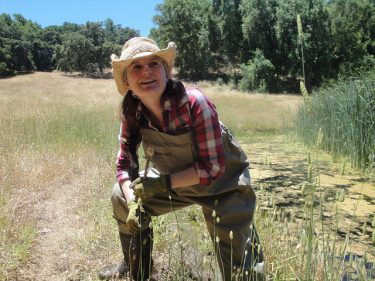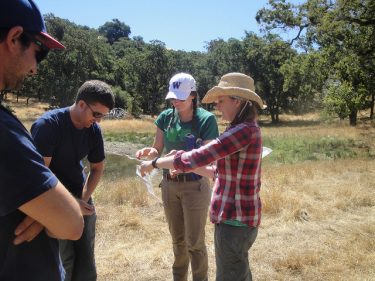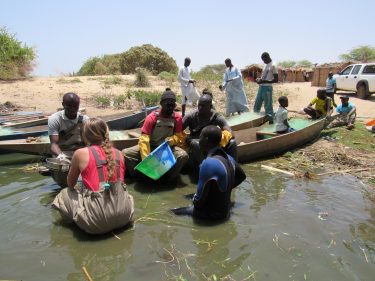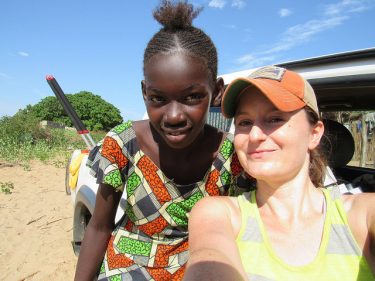
Mention the word “parasite”, and Chelsea Wood’s face lights up. She may be one of the few people on Earth who think so fondly of them. But it makes sense — Wood is a marine ecologist and her entire lab focuses on parasites and the role they play in nature. Turns out, it’s an important one — and one that may be changing over time.
“I got interested in parasites because there’s this narrative circulating in the disease ecology world that the sky is falling. There are all these outbreaks happening all around the world in a variety of wildlife species,” says Wood. “The question is: are these outbreaks normal? Or is it that we’re just now noticing it, and tracking it, and recording it, and it’s been happening forever? We have almost no ability to answer that question because there are no long-term data to turn to.”
Parasites are worth paying attention to. Many affect wildlife, and if their populations are exploding it can take a toll on the health of those populations. The same goes for humans – an uptick in prevalence of parasites that transmit to people can be devastating. Think malaria.

Wood and her lab group try to reconstruct ecosystems of the past in order to piece together whether the numbers and kinds of parasites we see today are different, and what may be causing change. Part of what makes Wood’s face light up is the challenge of putting the puzzle pieces together. It’s the kind of thing ecologists love to do.
“The whole field of historical ecology is kind of an imaginative field, where you get to dream up what an ancient ecosystem might have looked like and then test those predictions with data. One of our current projects using museum specimens is aiming to reconstruct 100 years of change in parasite assemblages of Puget Sound,” says Wood.
Wood and her team will soon begin reconstructing that Puget Sound ecosystem of yesteryear, by checking out the parasites in old fish specimens preserved in natural history collections. Many of the fish specimens Wood’s team will use – like salmon, herring, and others that make up the Puget Sound food web – are from the extensive collection managed by the UW Fish Collection, a collaboration between the Burke Museum and the School of Aquatic and Fishery Sciences, all neatly preserved in jars. “I just can’t wait to see all the weird stuff we’re going to see in these fish.”

One thing they anticipate finding are extinct species of parasites. Human pressure — like fishing, climate change and pollution — can change the number and kinds of fish and other species present in an ecosystem, which has implications for the transmission and prevalence of their parasites. And because the Puget Sound has changed so much, Wood expects to find some surprises when they look back in time. “We’re expecting we may find some parasite species that went extinct before they could even be described.”
If you’d asked a teenaged-Wood if she thought she would make parasites as her life’s work, she’d have raised an eyebrow. “I don’t think anyone is born to be a parasitologist,” she says. “But a lot of people are born to be marine biologists.” Never more than a few miles from the ocean, her adolescent years on Long Island formed a bond between Wood and the saltwater. She never considered any career path other than marine biology, “with the exception of stand-up comedy. But as a seven-year-old, I think my timing was a little poor,” she says wryly.

For an ecologist, parasites are deeply fascinating. They have improbably complex life cycles and outsized influences on ecosystems, and are poorly studied, which makes parasite ecology an exciting field to work in. But Wood wants to make sure her work connects to people too, especially since certain parasites can wreak havoc on human health. For example, Wood is working in the West African nation of Senegal to figure out whether the environmental factors that control human disease schistosomiasis can be manipulated. If they can, then perhaps through environmental interventions, we might be able to reduce the infection rate. The parasite comes from freshwater snails and is directly transmitted to humans.
“In a lot of ways, I feel like this project is the culmination of everything that I’ve learned as an ecologist, because it is the place where we have the most leverage to do good in the world. Our lab’s projects all have important applications to natural resource management and conservation, but this is where we can improve the lives of individual humans in real time, right now.”
Chelsea Wood is an assistant professor of aquatic and fishery sciences at the University of Washington’s College of the Environment.

